Loblolly or Slash–Which Pine Is It?
The USA is loaded with forests—national forests, state forests, private land companies with millions of acres of forest, but what do you know about pine trees other than they have cones, needles and fall on your house in a hurricane.
Pine trees are a wonderful thing. Alive, they provide shade, a home for birds and a nice calming sound when a breeze moves through the branches. They suck up the carbon dioxide you breath out and turn it into the oxygen you breathe in. Their roots help stop erosion. Pine trees are one of the South’s biggest cash crops. In fact, the timber and petroleum industries provide jobs to thousands and thousands of Louisiana workers.
When it dies, a pine tree becomes a woodpecker’s smorgasbord. Sure, a tall, lone pine standing in a field is a lightning rod, but if you’re not standing under it in an electrical storm, you don’t have much to worry about.
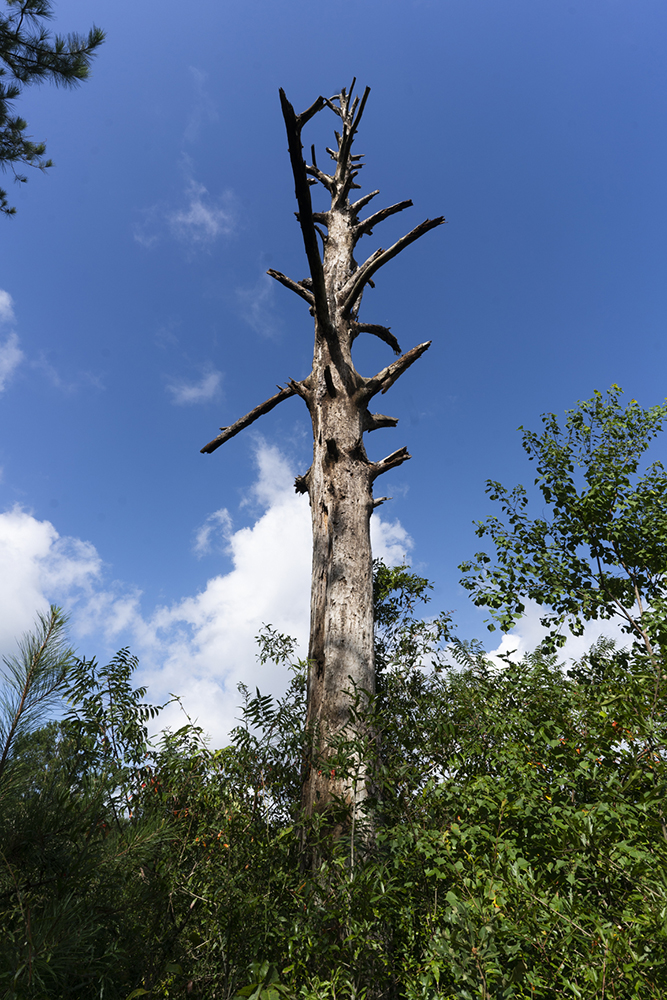
Bet you didn’t know there are different species of pine trees and if you want to impress your friends on a walk through a forest, learn how to tell the difference and point out which is which. They may all look alike standing in the forest, but maybe you haven’t seen the trees for the forest.
Let’s start with the pines that grow naturally and reseed themselves in South Louisiana flatwood forests—Slash Pine and Loblolly Pine.
Both have some common characteristics: They are tall with a single straight trunk from the ground to the top. Branches, distinctly smaller than the trunk, grow from the trunk and as the tree grows the lower branches die and drop off crashing down on whatever is underneath. Both form pollen cones in the early spring and release enormous amounts of yellow pollen that covers your car and sometimes makes your eyes and nose runny. Both have cones with seeds inside. When the cones mature in two or three years they release their seeds and you can see them floating down from on high with their little wings carrying them this way and that. The seeds take root fairly easily and a bare field will grow up in pine trees naturally if it’s not kept cut. Pine trees are evergreen, meaning they keep their leaves (needles) all year, unlike deciduous oaks and hickories and pecan trees whose leaves fall off in the fall. Pines have long needles that are held in bundles called “fascicles” with a sheath holding the needles together at the base.
A couple of steps can identify which species is which. Begin by collecting needles from different locations on the same tree. Then measure the length of the needles in each fascicle and average them for the tree. Look at the tree. Are the needle clusters very dark green and dense along the length of the twigs or are they clustered at the end of bare twigs sort of like a broom with a handle? Is the bark deeply furrowed or more or less flat against the trunk.
Loblolly Pine, Pinus taeda
Ultimately, this pine will grow tall and straight to a height of 80-100 feet. Dark-reddish-brown bark is thick, deeply furrowed and divided into irregular, scaly blocks of which the top layer will break off. The outer branches appear densely covered with very dark green needles. Sometimes the large limbs of the Loblolly grow rather gnarly with the lower ones growing towards the ground if the tree is beside a pond.
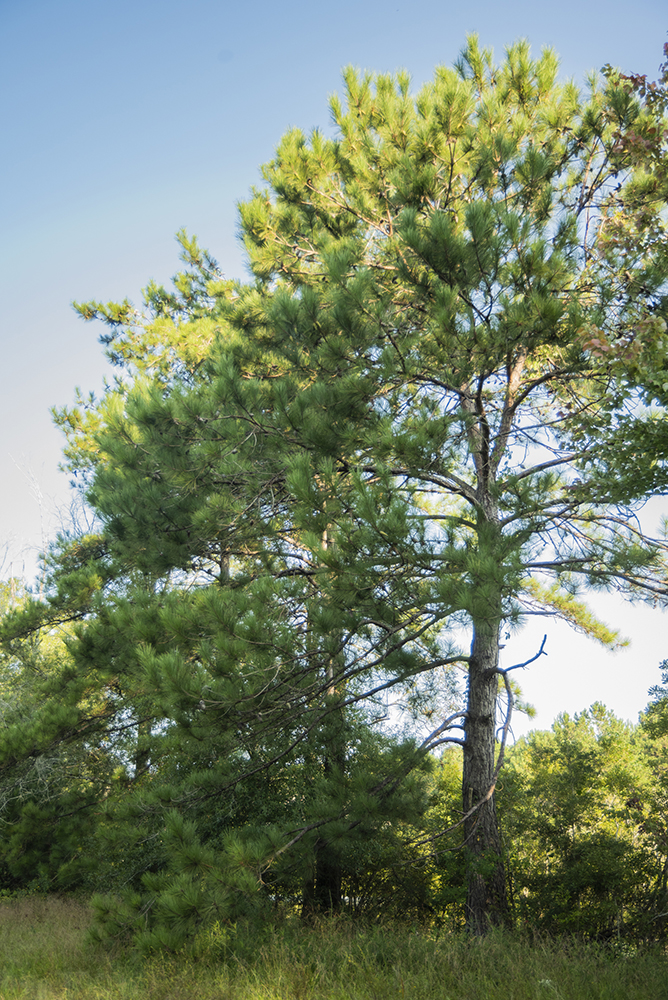
Loblolly Needles: 6-1/2 to 7 inches long (at Vista Farm); typically 3 per fascicle; dark green and somewhat twisted.
Loblolly Sheath: about 1/2 to 5/8 inches long.
Loblolly Cones: 3 to 5 inches long.
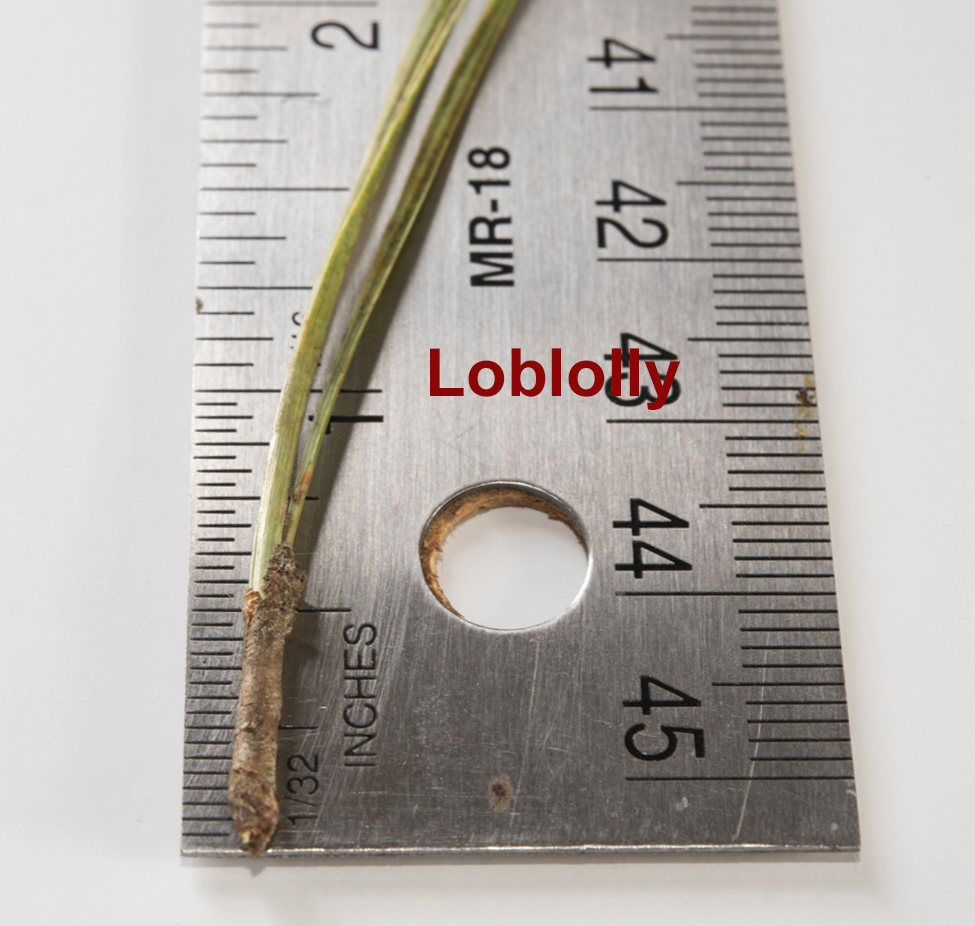

Loblolly grows throughout Louisiana, but it does especially well in wet sites. Because it grows well on a variety of sites, its value for lumber, plywood and pulpwood cannot be overstated.
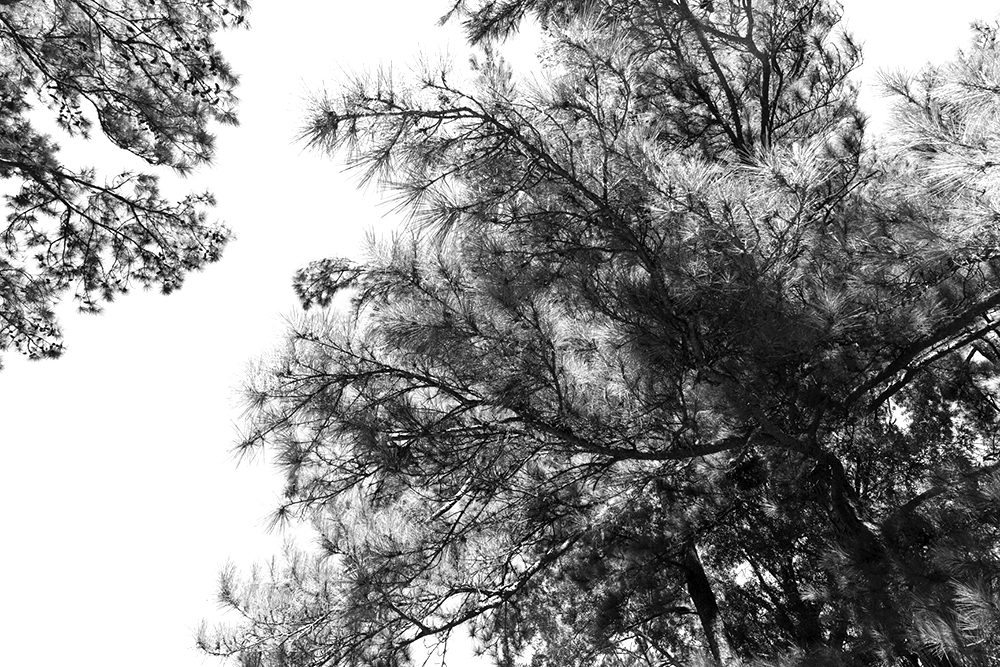
Slash Pine, Pinus elliottii
Mature Slash Pine can grow to a height of 60-100 feet and it is one of the most important pines grown for the lumber industry. It is a fast growing tree (in the timber industry 30 years to maturity is “fast”) with a tall, straight trunk and horizontal, upward sweeping branches. The bark of Slash Pine forms large, scaly, irregular plates that peal off in papery layers revealing an orangy colored inner bark. Rough, more or less, bare twigs terminate in a cluster of long needles resembling a broom with a handle. Slash pine commonly grows in moist areas such as the edge of a pond, flatwoods and swamps in full sun or partial shade where the soil is acidic. The wood of Slash Pine is heavy, hard, durable and stiff.

Needles on Slash Pine at Vista Farm are 8-3/8 to 9-1/4 inches long. The younger trees sometimes have 2 needles per fascicle and the older ones 3 per fascicle.
Slash Sheath: about 3/4 inches long
Slash Cones: 3 to 6 inches long
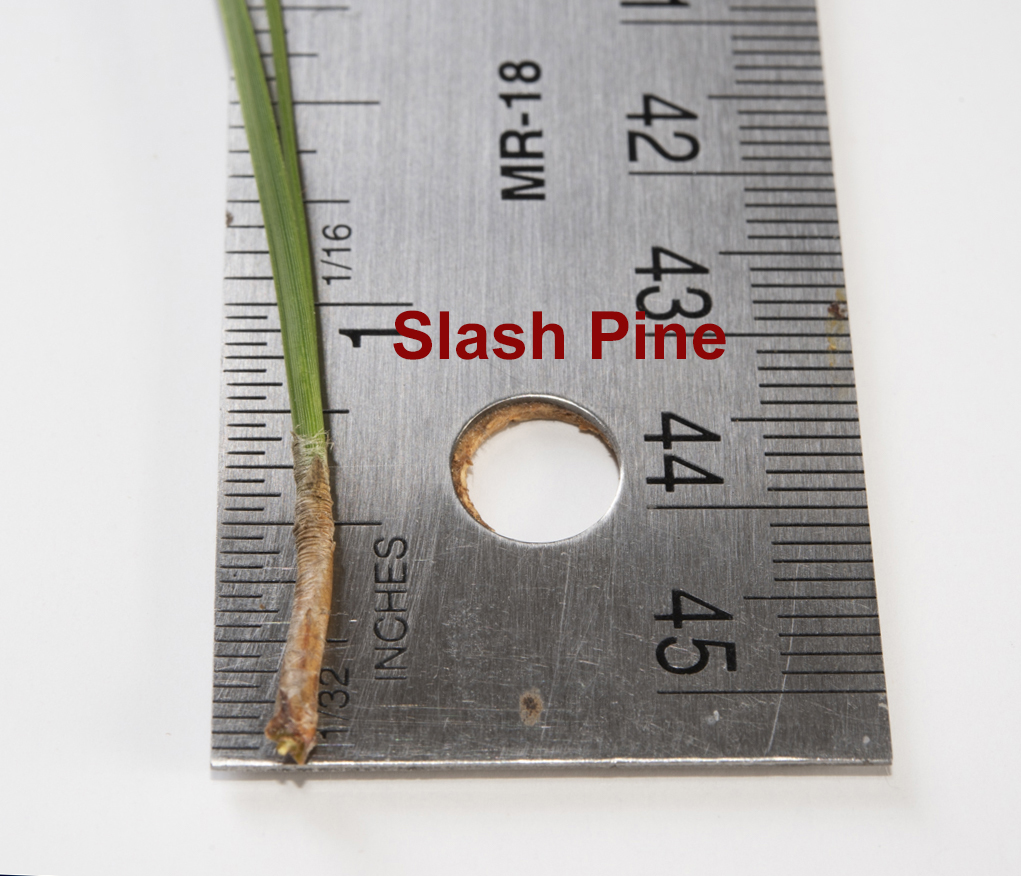
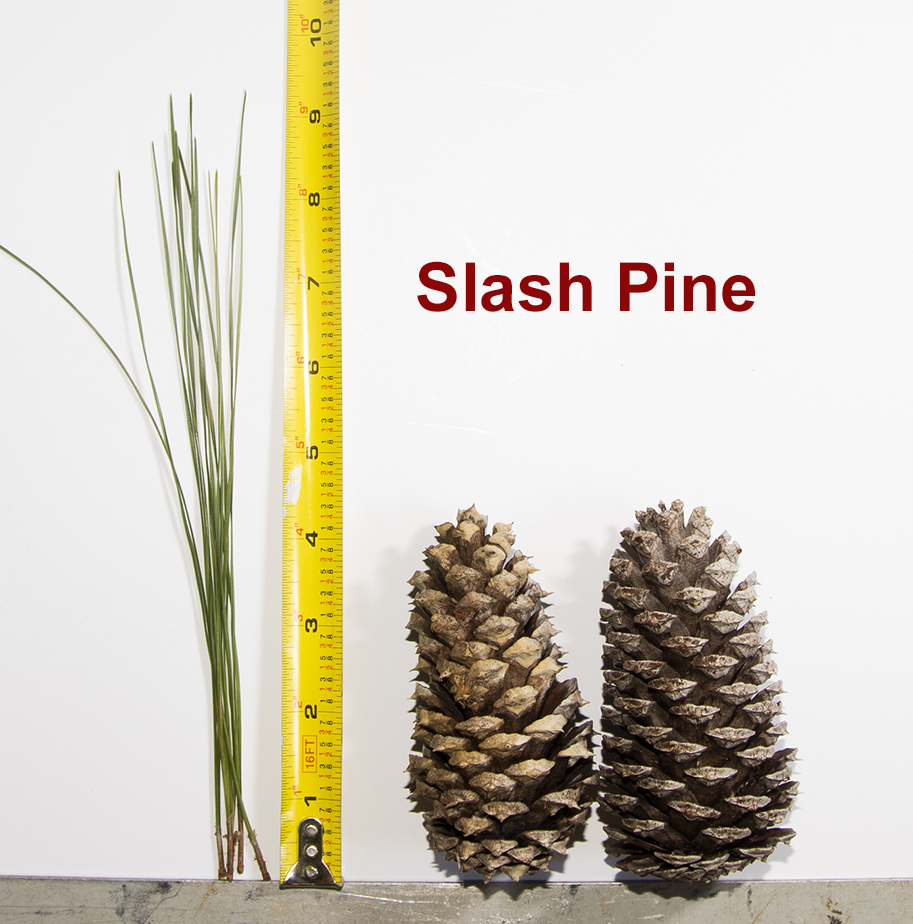
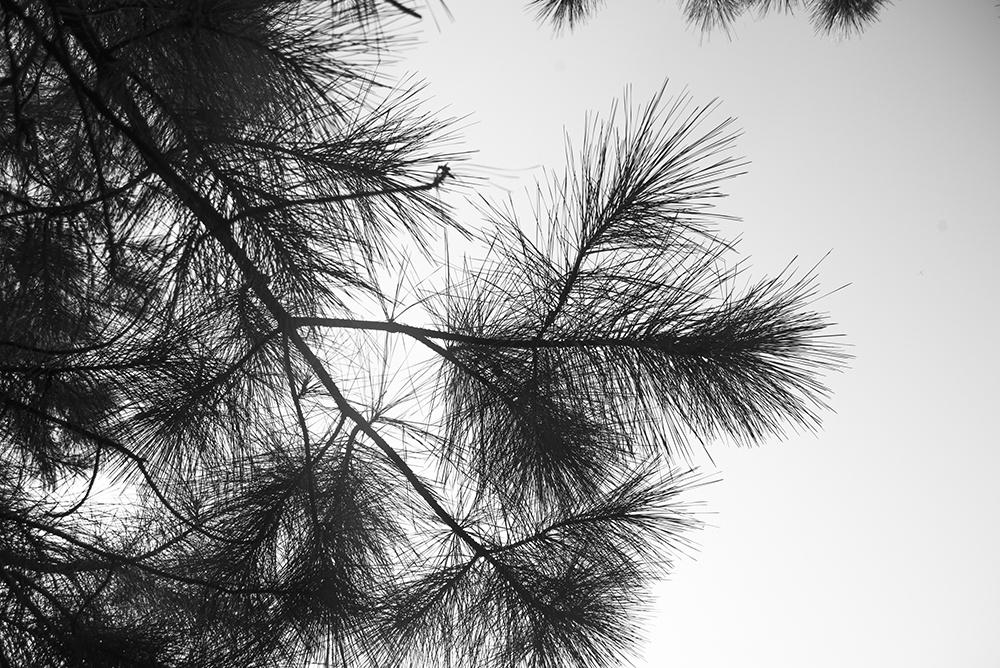
Pine Needles
Pine needles are a whole industry in themselves. That stuff you order over the phone from the “straw guy” to mulch your garden? It’s pine straw. Rhododendruns, sasanquas, and azeleas love the acid in pine straw and it helps deter weeds and grass. An essential oil extracted from pine needles is a natural antibacterial sometimes used in soap and household cleaners. Native Americans wove pine needles into baskets and today some of those items are quite collectible. Pine branches are perfect at Christmas time when they are green and everything else is brown and dead. Pine boughs last a month or so inside the house and they smell great. After the holidays, bundle up a handful and use them as kindling in the fireplace.
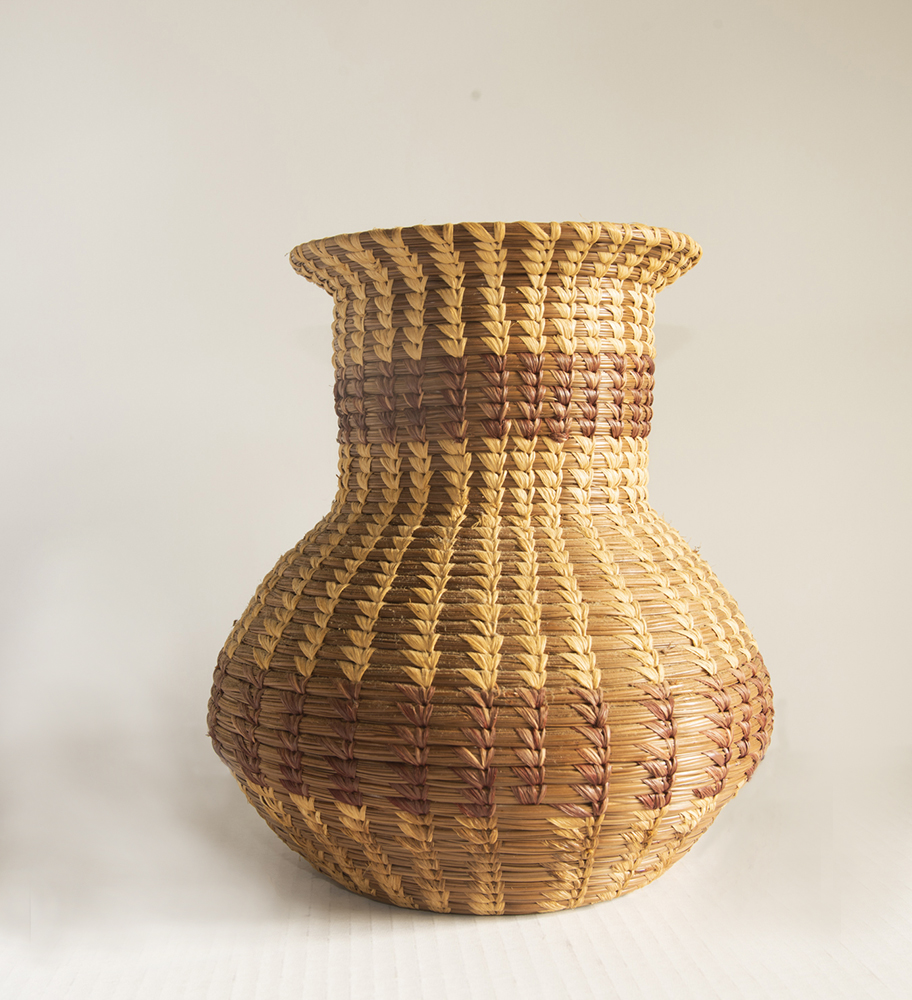
Pine Cones
Even pine cones are interesting. The Web is littered with crafting ideas for pine cones. No holiday is without its pine cone turkey, bunny, spider, ornament, bird feeder, whatever. But the most interesting thing about a pine cone is the double spiral pattern the scales (or bracts) of the cone form when you look at it from the bottom. This spiral is described mathmatically as a Fibonacci sequence, but it pops up in nature in amazing ways from seashells to rose blossoms, the fiddlehead of a fern, pineapples, sunflowers, even fingerprints.
So celebrate the pine tree whether Slash, Loblolly or some other species. They are a valuable asset to the planet.
Sources include publications of the USDA Plant Guide, 4H Club resources and PhysOrg. Special thanks to John Burris, district representative for the La. Dept. of Agriculture and Forestry, St. Tammany and Tangipahoa parishes.

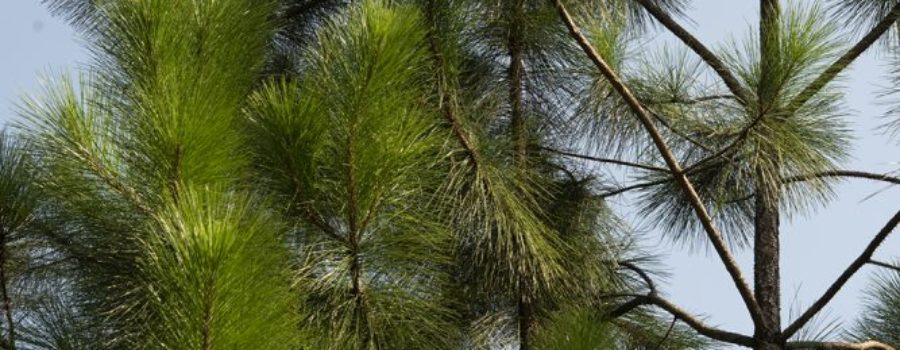
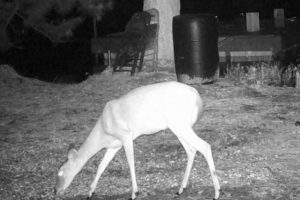
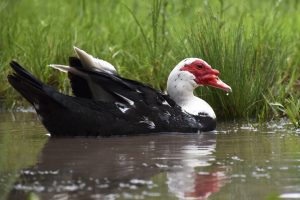

Recent Comments